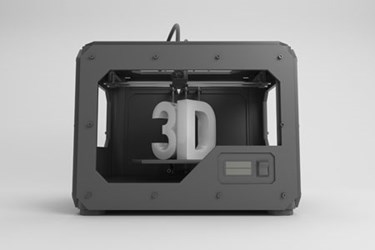Boy Receives 3-D Printed Arm

By Christine Kern, contributing writer

Online community of people help design a prosthetic limb modeled after Imperial Stormtroopers for 7-year old boy.
3-D printing technology has been developing gradually over the past few years, from manufacturing to candy-making to healthcare, where it is being used to create rib cages to help train surgeons and aid in reconstructive facial surgery. Now, is has been used to create prosthetic limbs, and one seven-year old boy from Georgia was the happy beneficiary of the “cool” technology.
The cost of prosthetic limbs can be prohibitive for families of children born with partially formed arms, like Liam Proter, who was born missing part of his left arm. Proter had a traditional prosthetic, but as his mother explained to The Augusta Chronicle, “It didn’t really move. So to a little kid, it was nothing but dead weight. He did a lot without it.”
Enter e-NABLE, an online community of people who work together to create prosthetics using 3-D printers for those in need. Porter’s new arm was the result of collaboration between a prop maker in Washington and a carpenter in South Africa, according to People.
Because designs are created from plastic in an open source process, the price of the resulting prosthetics remains low. That meant that Porter’s arm only cost $300 (compared to a typical $9,000 prosthetic) and took about three months to make, e-NABLE’s John Peterson said. Many insurance companies do not cover costly prostheses for children because they will quickly outgrow them, so cost is a vital part of the prosthetic process for these kids.
“It came out pretty well,” Peterson told the Augusta Chronicle. It will take some initial adjusting and as Liam grows it can be tweaked to fit him.”
As the Huffington Post pointed out, 3-D printing technology has provided new opportunities for others as well, including, Daniel Omar, a 16-year-old from South Sudan, who lost his arms from an Antonov bomb. Last year, an American doctor, Mick Ebeling, led a team that created a low-cost prosthetic made by a 3-D printer for the boy. The limb cost only about $100 and restored Daniel’s sense of independence.
And last year, a six-year-old Florida boy born without most of his right arm, was fitted with a 3-D-printed myoelectric prosthetic that enabled him to hug his mom for the first time.
